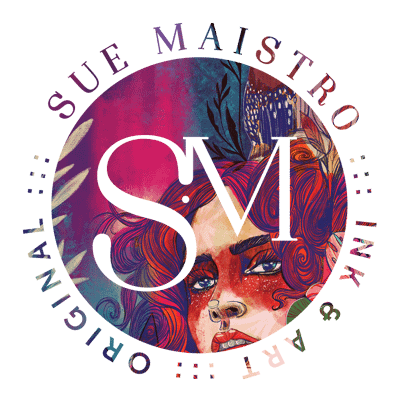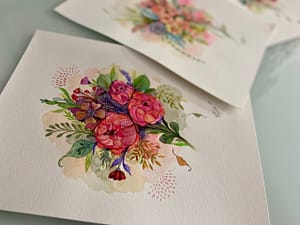Have you ever heard that creativity can be applied in various aspects of our lives? Indeed, creativity is nothing more than bringing a new form or a different solution to a problem. It can be a new method, a device, an object, something artistic, or not. Being creative doesn’t necessarily mean being an artist; creativity is a part of the lives of many people who are not specifically from the artistic world.
Individuals considered creative possess certain qualities that drive them to exercise creativity daily in their lives, sometimes without even realizing it. These individuals exhibit a creative productivity to solve most of the issues in their lives, whether personal or professional.
Autonomy and self-confidence: Creative individuals tend to be non-conformist and independent in their actions and thoughts. They have a deep, broad, and sensitive self-awareness, understanding both their strengths and weaknesses.
Independence in thoughts and actions is often crucial for the creative process, as creative people need to be able to work alone while also being willing to express ideas with others, even if these ideas sometimes seem radical.
Creative individuals can also be introspective and reflective. They rely on their own intuition and don’t always depend on interaction with others to create or find answers to problems in a creative and entirely new way. While many seek external sources for creative solutions, this is not a determining factor for creativity. Many ideas and solutions sometimes come from a completely introspective process by a single person, not necessarily a group.
Creativity also seems to be a common characteristic among people who are naturally curious. These individuals have the ability to formulate unique questions and naturally seek novelties. This allows creative individuals to identify unique needs (perhaps a problem or opportunity that many others are not seeing).
It is also common among people with high intelligence or above-average intelligence. Many studies on the relationship between creativity and intelligence have shown that being extremely intelligent is not a stimulant for creativity, but rather one of the characteristics of many creative individuals. This means that a highly intelligent person is not always creative; it’s a combination of factors.
For example, a mathematician may have a high level of intelligence primarily using convergent thinking (analytical reasoning – measured by intelligence tests), while a creative person with a high level of intelligence may primarily use divergent thinking (a wealth of ideas and original thinking).
Educational psychologist E. Paul Torrance identified other characteristics that make a person creative, such as having fluent thinking, thinking quickly about many ideas, being flexible, the ability to use these ideas unusually, and being original in these thoughts. He did this using the Torrance Test of Creative Thinking, which explains all these skills.
New ideas were sometimes rejected and still are in many cases. In some groups of people, there is a tendency not to look favorably upon something new. Perhaps it’s the fact that many have difficulty dealing with the new. On the other hand, many societies have adopted creative ideas to solve a myriad of problems (even in many cases without recognizing their inventors, especially when they were women).
Creative people don’t exist by chance.
Csikszentmihalyi discussed the relationship of the creative person with the world. In the process, he formulated a view of creativity as a system that comprises (1) the creative individual, (2) the domain (the class of knowledge or activity that makes up a culture or any area of expertise, such as figure skating, chess, or singing), and (3) the specific field of practice.
The individual is the creative person along with their talents, life experiences, and aspirations. They interact with the sociocultural environment; they and the environment are in constant interaction.
Creativity requires a significant investment in education, training, knowledge, learning, and practice. A person may possess creative thinking skills but may not be able to produce works that are influential and valued due to a lack of specialization (and sometimes, even opportunities).
Creative Process
American psychologist Mark Runco states that the creative process consists of six essential stages or phases. In the first phase, “orientation” (a moment of intense interest and curiosity), the creative individual gathers information.
The second stage, “incubation,” involves defining the problem and seeking a solution, involving the processing of large amounts of information; this can occur at a conscious or unconscious level. “Illumination,” the third stage, is marked by divergent thoughts, openness, and enthusiasm.
In the fourth stage, “verification,” the individual evaluates their own work and compares it with what is known in the field. Then, in the “communication” stage, the individual submits their work to the field, making it available to experts who will judge its quality and usefulness. “Validation” occurs in the sixth stage, where the work is made available to society and is consequently supported or rejected.
This phase model supports the systemic view of the creative process, emphasizing the social validation that occurs if a work is supported. In this way, the mental processes of the creative individual, the demands of the domain, and the recognition by the field (or society) combine to produce the phenomenon known as creativity – and demonstrate how this unpredictable component of human behavior contributes to human evolution.
Read more:
- Creative Process of Tattoo Arts
- History of Art: Definition and Timeline of Periods
- Art: Why Artistic Expression Is Important
- Work of Art: A Tangible Financial Investment
Read the portuguese (Brazil) version:
Você já ouviu falar que a criatividade pode ser aplicada em diversos momentos de nossas vidas? Sim, a criatividade nada mais é do que trazer uma forma nova ou uma solução diferente do habitual para um problema. Pode ser um método novo, um dispositivo, um objeto, algo artístico ou não. Ser criativo não é necessariamente ser um artista, a criatividade faz parte da vida de muitas pessoas que não são expecificamente do mundo artístico.
Pessoas consideradas criativas possuem algumas qualidades individuais que as fazem buscar pelo exercício da criatividade diária em suas vidas, as vezes sem nem mesmo perceberem. Estas pessoas possuem uma produtividade criativa para resolver a maior parte das questões de suas vidas, sejam elas pessoais ou profissionais.
Autonomia e autoconfiança: pessoas craitivas tendem a ser incorformistas e independentes em suas ações pensamentos. Possuem uma consciência profunda, ampla e sensível de si mesmos. Se conhecem, tanto em seus pontos fortes quanto em suas fraquezas.
A independência de pensamentos e ações costuma ser fundamental para o processo criativo, na medida em que as pessoas criativas precisam saber trabalhar sozinhas também presicam estar dispostas a expressar ideias com os outros, ainda que estas ideias as vezes pareçam radicais.
Pessoas criativas, também podem ser introspecticas e reflexivas. Olham para sua própria intuição e nem sempre dependem de interação com outros para criar ou encontrar respostas para problemas de forma criativa e totalmente nova. Apesar de muitos buscarem fontes externas para encontrar uma solução criativa, isso não é um fator determinante para ser ou não criativo. Muitas ideias e soluções, as vezes vem de um processo totalmente introspectivo de uma única pessoa e não, necessariamente de um grupo.
A criatividade também parece ser uma característica comum as pessoas que são naturalmente curiosas. Isto porque estes indíviduos possuem a capacidade de formular questões únicas e buscar por novidades de forma natural. Isto faz com que pessoas criativas identifiquem necessidades únicas (talvez um problema ou oportunidade que muitos não estão vendo).
Também é comum as pessoas que possuem alta inteligência ou uma inteligência acima da média das pessoas. Muitos estudos sobre a relação entre criatividade e inteligência também mostrou que ser extremamente inteligente não é um estimulante a criatividade, apenas que essa é uma das característica de muitos criativos. Isso significa que uma pessoa altamente inteligente, nem sempre é criativa. É um conjunto de fatores.
Um matemático, por exemplo, pode ter um alto nível de inteligência usando principalmente seu pensamento convergente (raciocínio analítico – medido por testes de inteligência) enquanto um criativo com um alto nível de inteligência pode usar principalmente seu pensamento divergente (riqueza de ideias e originalidade de pensamento).
O psicólogo educacional E. Paul Torrance identificou outras características que fazem uma pessoa ter criatividade como ter um pensamento fluente, ou seja, pensar rapidamente em muitas ideias, ser flexível, a capacidade de usar estas ideias de forma incomum e ser original nestes pensamentos. E isto ele fez usando o Teste Torrance de Pensamento Criativo, que explicaria todas estas habilidades.
As novas ideias foram por vezes rejeitadas e ainda são em muitos casos. Em alguns grupos de pessoas há uma tendência a não olhar para algo novo com bons olhos. Talvez seja o fato de muitos terem dificuldades de lidar com o novo. Por outro lado, muitas sociedades adotaram ideias criativas para resolver uma infinidade de problemas (mesmo que em muitos casos sequer tenham reconhecidos seus inventores, especialmente quando estes eram mulheres).
Pessoas criativas não existem por acaso.
Csikszentmihalyi discutiu a relação da pessoa criativa com o mundo. No processo ele formulou uma visão da criatividade como um sistema que compreende (1) o indivíduo criativo, (2) o domínio (a classe de conhecimento ou atividade que compõe uma cultura ou qualquer área de especialização, como patinação artística, xadrez ou canto) e (3) o campo específico de prática.
O indíviduo é a pessoa criativa junto com seus talentos, experiências de vida e aspirações. Ele interage com o ambiente sociocultural, ele o ambiente estão em constante interação.
A criatividade necessita de um investimento considerável em educação, formação, conhecimento, aprendizagem e prática. Um pessoa pode possuir habilidades de pensamento criativo mas não conseguir produzir trabalhos que sejam influentes e valorizados por falta de especialização (e as vezes, até oportunidades).
Processo criativo
O psicólogo americano Mark Runco afirma que o processo criativo consiste em seis etapas ou fases essenciais. Na primeira fase, “orientação” (momento de intenso interesse e curiosidade), o indivíduo criativo reúne informações.
A segunda etapa, “incubação”, consiste na definição do problema e na busca de uma solução e envolve o processamento de grandes quantidades de informações; isso pode ocorrer em um nível consciente ou inconsciente. A “Iluminação”, o terceiro estágio, é marcada por pensamentos divergentes, abertura e entusiasmo.
Na quarta etapa, “verificação”, o indivíduo avalia seu próprio trabalho e compara-o com o que é conhecido na área. Em seguida, na etapa de “comunicação”, o indivíduo submete seu trabalho a campo, colocando-o à disposição de especialistas que julgarão sua qualidade e utilidade. A “validação” ocorre na sexta etapa, na qual o trabalho fica à disposição da sociedade e consequentemente é apoiado ou rejeitado.
Este modelo de fase apoia a visão sistêmica do processo criativo, enfatizando a validação social que ocorre se um trabalho for apoiado. Desta forma, os processos mentais do indivíduo criativo, as exigências do domínio e o reconhecimento pelo campo (ou sociedade) combinam-se para produzir o fenómeno conhecido como criatividade – e demonstra como este componente imprevisível do comportamento humano contribui para a evolução humana.
Leia mais:





